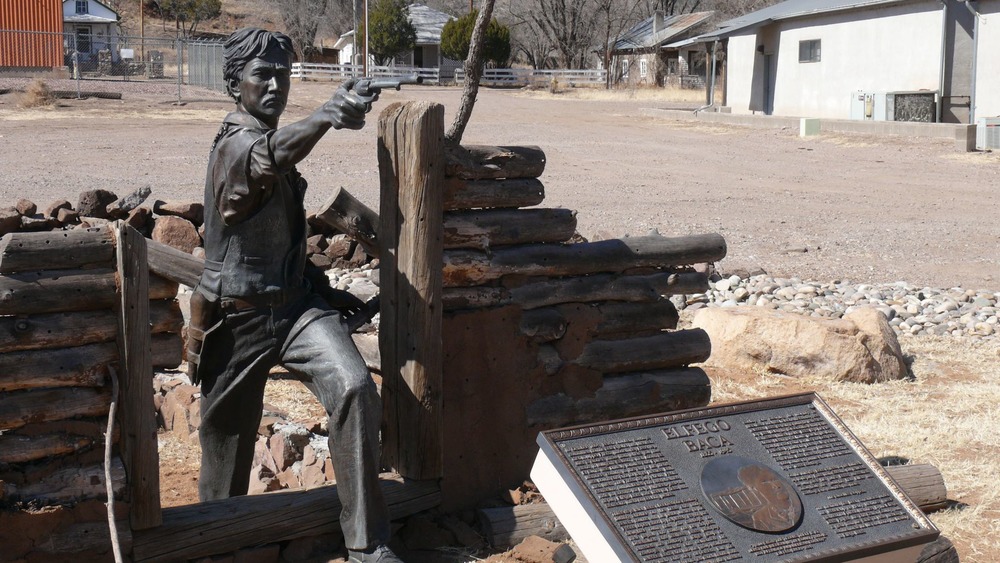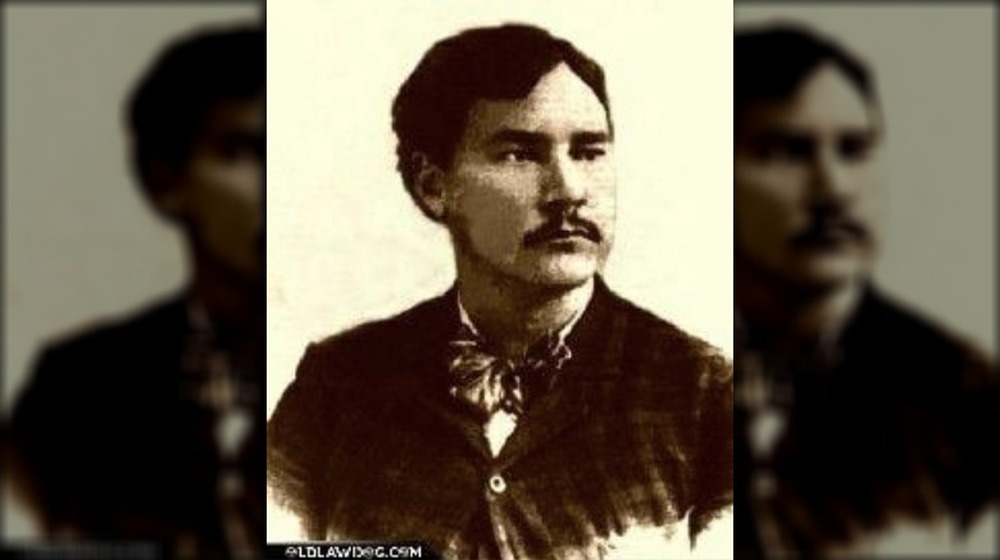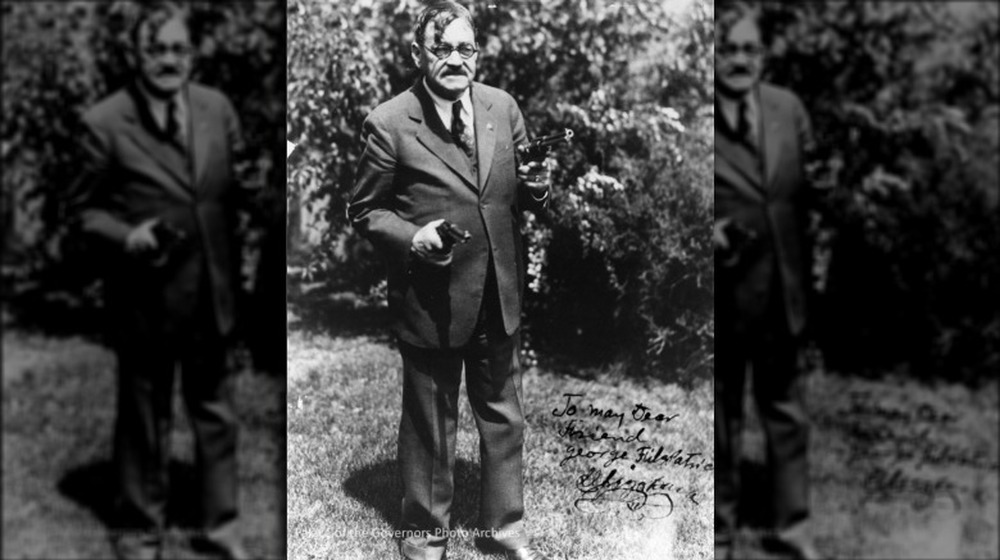The Untold Story Of Heroic Frontier Peace Officer Elfego Baca
The gunfight at the O.K. Corral has gone down in popular history as one of the most legendary shootouts in the Wild West. The story of Doc Holliday and the Earp brothers going up against their rivals, the Cochise County Cowboys, in Tombstone, Arizona, on October 26, 1881, has been immortalized in so many movies, TV shows, and books that it now stands as a trope for our conceptions of the American West. The vigilante justice, the sharpshooters, the outlaws on the run, the eye-for-an-eye vengeance.
But despite its legendary status, the O.K. Corral fight really isn't the most impressive showdown of that era. That clash only lasted about 30 seconds, and about 30 shots were fired, as History.com tells us. And the sides were pretty evenly matched: four against five. Compared to a confrontation in western New Mexico three years later, Wyatt Earp's famous face-off pales in comparison to the so-called "Frisco War" waged by Elfego Baca. According to Legends of America, his battle with a posse of bully cowboys "was likely the most unequal gunfight in the history of the American West." All by his lonesome, he took on over 80 outlaws and dodged hundreds of bullets in a clash that lasted more than 33 hours. But despite Baca overcoming such outrageous odds, his story hasn't been told nearly as often as Earp's, so let's take a look back to how it all went down that day.
Elfego Baca decided to take a stand for his Hispanic community
In October 1884, Elfego Baca was 19 years old. As the story goes, he was in the town of Socorro, New Mexico, when the sheriff of Lower Frisco, a friend of his named Pedro Sarracino, told him how drunken cowboys from Texas were terrorizing the Hispanic residents there. According to History.com, the persecution had gone on for months. The cowboys had brutally castrated a young Mexican man and had used another one for target practice. When Baca scolded Sarracino for not taking action against them, the sheriff reportedly told him that his job was "available to anyone who wanted it," then plodded off to the local watering hole for a drink. So Baca decided to take him up on the offer.
Baca himself wrote that he pinned a kid's fake police badge on and set off for Frisco as an idealistic vigilante, but other accounts say that he was given an expedited commission and sent to exact law and order. When he arrived in Frisco, a cowboy named Charles McCarthy took five shots at him in a saloon. Baca promptly arrested McCarthy, and then the real trouble began. A posse of over 80 cowboys galloped into town to try to spring McCarthy from jail and make an example of Baca. So the newly arrived deputy safeguarded the women and children of the town in the local church and got himself ready for one rough night.
Elfego Baca's heroic stand against a posse of angry cowboys
Baca retreated to an adobe hut and took a stand against the marauding ropers. When a cowpuncher began kicking at the door of the hut and threatening to "get" Baca, he was met by a round of bullets, one of which hit him in the belly, killing him. His associates opened fire on the hut, peppering it with over 400 rounds from all sides.
Little did the cowboys know that the floor of the hut had been dug out 18 inches below ground level, and all of their rifle fire whizzed over Baca's head while he reached up and returned fire with his pistols from below. As night fell, the attackers lit the hut on fire, causing the roof to collapse. They were sure that they had done him in — so sure that they waited until morning to check. When the sun came up, they found him flipping tortillas for his breakfast. The showdown resumed, and still the the cowboy mob couldn't take Baca down. It finally came to an end when the sheriff and deputy from Socorro came to town to put a stop to the madness. Baca was arrested for killing the cowboy he'd shot. He was tried twice, but was acquitted both times. He went on to serve as a lawyer, district attorney, school superintendent, and bouncer at a Prohibition Era casino in Juarez, Mexico, before his death in 1945 at the age of 80.


